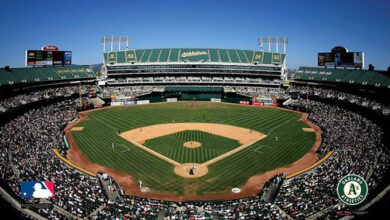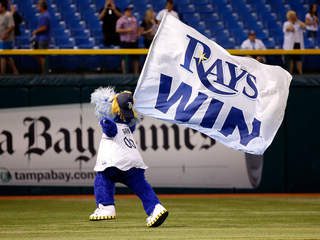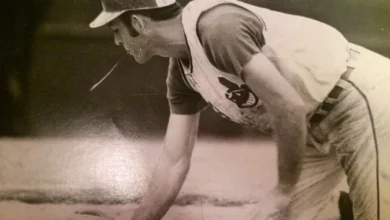
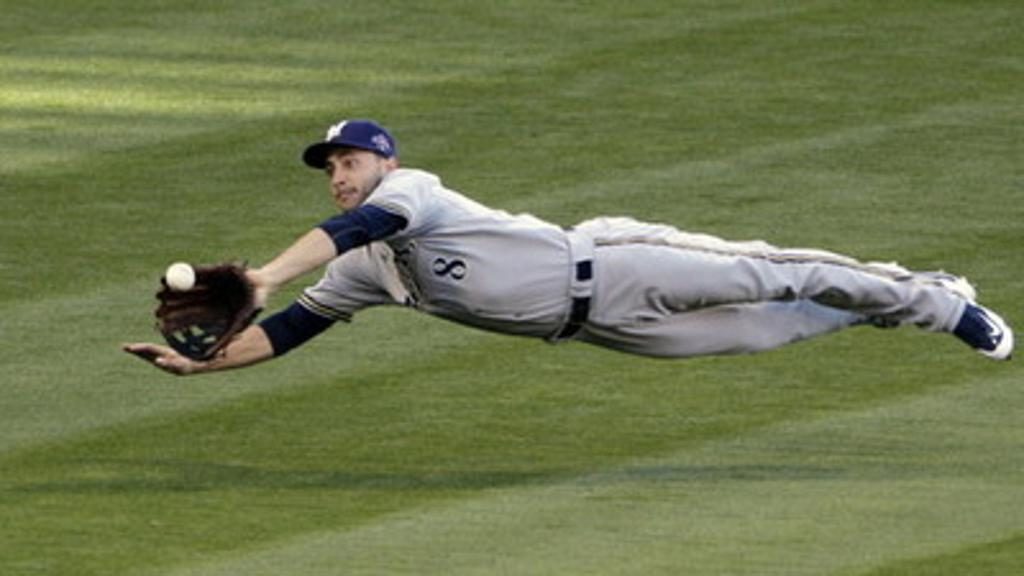
When people think of baseball, they usually think of the two pieces of equipment that are synonymous with the sport: the bat and the glove. Just like how the arrow quiver is an essential piece of equipment for an archer, the baseball glove is almost just as famous as the sport is itself. Baseball gloves have been one of the best selling pieces of sports equipment for decades. Millions of both baseball and softball gloves are sold annually. You can find a glove in just about every household in America. Having a catch with a baseball has almost been a staple of American childhood for years. Baseball is practically impossible to play without a glove. With the amount of velocity balls have when being hit in today’s fast powerful game, you would probably break your hand trying to catch a ball from close range. In the early years of baseball, everybody had the same glove and there were not many differences between the gloves used by teammates. In today’s game almost every position’s glove is specifically designed for their positions performance.
The Origin of the Baseball Glove
In the very beginning of baseball, gloves were not used at all. It was looked at as “soft” to use a glove. Players would put their hands together and catch the ball with both hands.
The first player to use a glove in a game was Charlie Waitt, an outfielder for the St. Louis Cardinals, who used a pair of fingerless tan leather gloves in 1875. Even though Waitt is credited as the first player to wear a glove, he did not want to be noticed wearing them in fear that he’d be seen as less of a man than the other players.
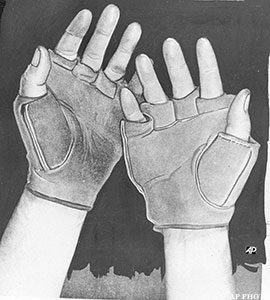
Once hand injuries became a common theme in baseball, more players began wearing protective gloves. In the early stages of baseball gloves, most of them were similar to Waitt’s where they did not have a web of any sort and no fingertips. They were mostly just used to prevent injuries while playing for padding the palm of the hand. As the 19th century came to a close more and more infielders were seen using gloves.
It was not until 1920, where the web design between the thumb and pointer finger was first introduced. Players started using the webbed gloves after pitcher Bill Doak suggested that it would make it easier to catch a ball with it. This was when the glove no longer was just a way to protect our hand, but a tool used to improve your game. The early webbed baseball gloves were still not very similar to today’s glove since the web was significantly smaller than how it is currently. After seeing the success the new gloves had in the sport, Doak sold his idea to the sports company Rawlings, who is still a big manufacturer in baseball to this day.
The Modern Baseball glove
As the game of baseball evolved so did the gloves. The biggest difference between the early glove and the modern glove was the size. Gloves have grown tremendously in size over the years with the average glove being around 11 to 12 inches long. This was due to players no longer using their palms to catch the ball, but instead using the web itself. This led to the qualities of baseball gloves improving rapidly and being made more efficiently each day. Even though the principle of the leather baseball glove has stayed the same, the material has become much lighter as well as more durable. Most professional players now have gloves that are specifically designed to their playing style.
Glove Types by Position
In today’s game each glove type is specifically designed to the position of the player. Some gloves are longer than other, some have different web patterns, and others do not even have individual fingers. These gloves are made to help assist players at their position.
The Infielder Glove
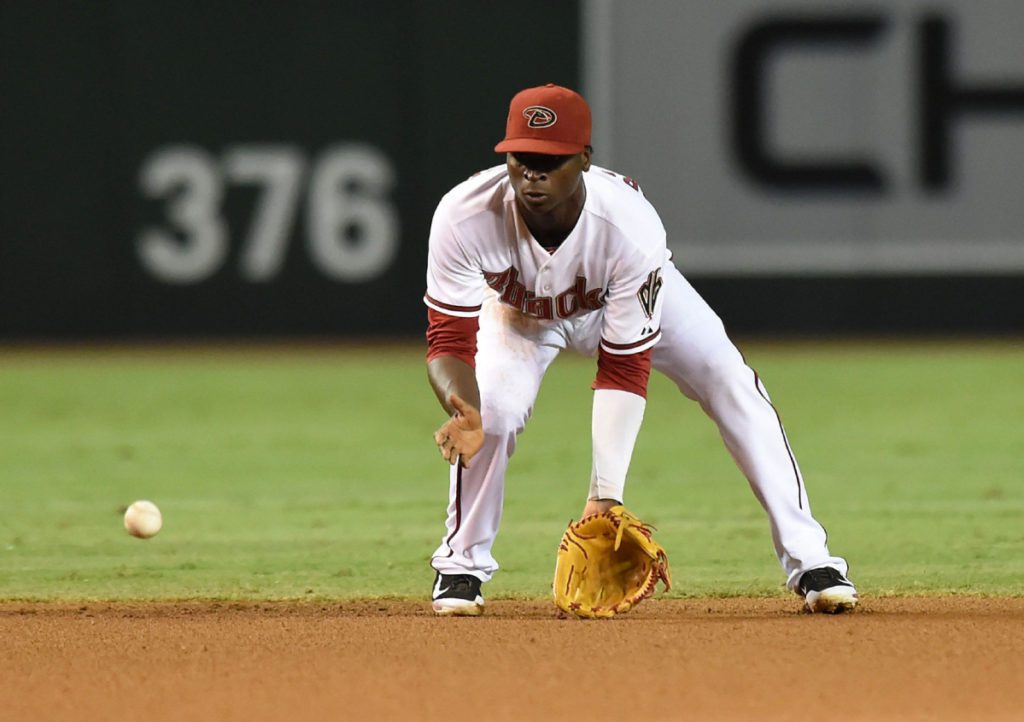
Infielder’s are known for their quick throws and flashy dives. In order to make spectacular plays they need the right kind of glove to do so. There are many different kind of infielder gloves since there are different type of infielders. Second basemen, shortstops, and third basemen are who uses these gloves. Infielder’s gloves are typically smaller than other gloves and usually are designed with smaller pockets for easily grabbing the ball out of for a quick throw. The webbing of the glove usually offers openings inside so that dirt will go right through the glove. This prevents the player from grabbing any dirt while trying to make a fast throw to try to secure an out. Even though the gloves are similar between three positions, there are slight modifications depending on the position.
Second basemen typically have the smallest glove on the team since they make a lot of quick throws around the diamond. Their pockets are also usually shallower to help retrieve the ball from the pocket easier.
Shortstops also need to be quick with their plays but need to have a longer range. This typically leads them to have a longer glove than the rest of the infielders.
Third basemen have gloves that around medium sized compared to the rest of the infielders. Third base gloves have an open web and deeper pockets than the others. This allows them to be able to catch balls that are hit hard from close distance.
The First Base Glove
Even though the first baseman is a part of the infield, their gloves are much different than the rest of the players they share the bases with. Often lacking individual fingers, first base gloves are typically much larger than the rest of the infield’s gloves. The bigger size of the glove gives teammates a much larger target to throw at which helps prevents an error. The gloves typically have a curved style shape on the edge of the glove to assist with picking up and scooping the balls. The first base glove also features less and padding along with a shallow pocket. Catchers have also been known to use first base gloves when catching knuckle ball pitchers.
Outfielder Glove
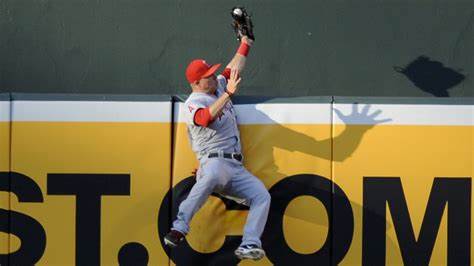
Outfielders tend to have much longer gloves than their teammates. Their gloves are designed with very deep long pockets to help catch fly balls and prevent them from slipping out of their glove. This longer glove also makes catches over the wall possible, robbing opposing hitters of homeruns. Outfielders typically need to have webbing that is see through in order to keep track of fly balls in the air. The design of webbing also doubles in assisting the outfielder in shielding out the sun. The webs typically come in two different styles. The trap style is used for a more flexible pocket, and the dual post which is stronger and allows a better line of vision.
Catcher’s Mitt
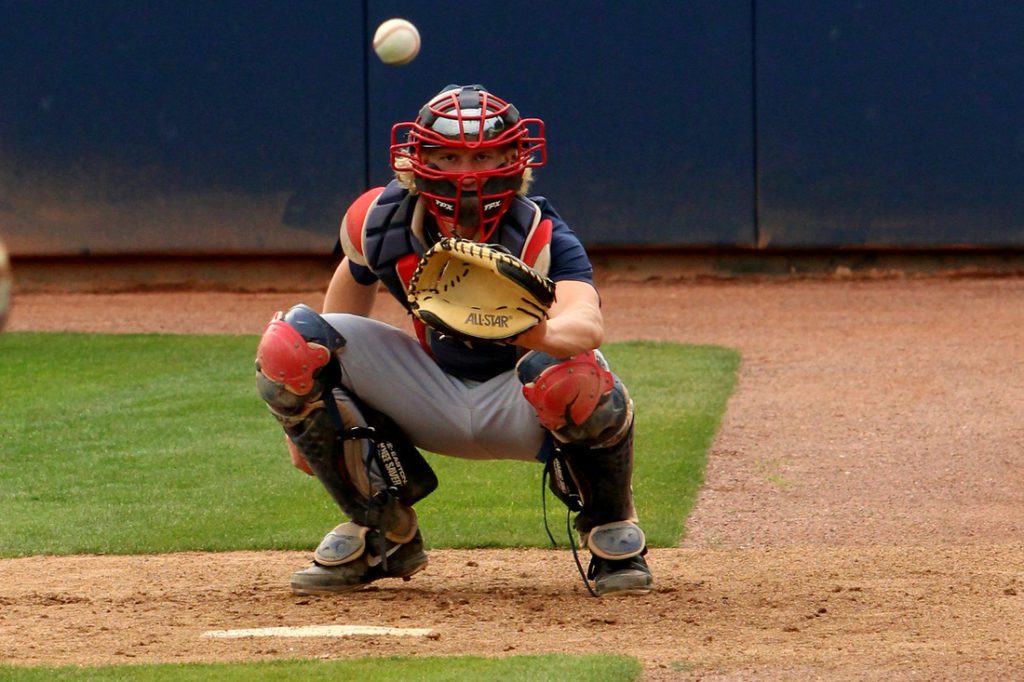
Out of all of the players on the baseball diamond, catchers have the most unique glove of them all. Since the catchers are being thrown balls that can exceed over 100 mph, their gloves must have a lot of support and protection. The catcher’s mitt is very large and almost resembles a clam shape with big pads surrounding the outside of it. The mitt also has a completely closed web to make sure a ball cannot have the chance to rip through it. Catcher’s mitts usually come in two different styles. The mitt can either open right above the wrist, or it can be closed in the back with a hole for the index finger to help support. Usually it just depends on what the catcher prefers when picking which type of style they want to use.
Choosing the Right Glove
It is very important to get the right glove when playing baseball. Using the wrong glove can lead to errors and poor performance on the diamond. This is why it is important to know what exact kind of glove you will need when playing. Even though the gloves are different, there is still the same goal of executing perfectly and getting every batter out in order to help win the ballgame.


